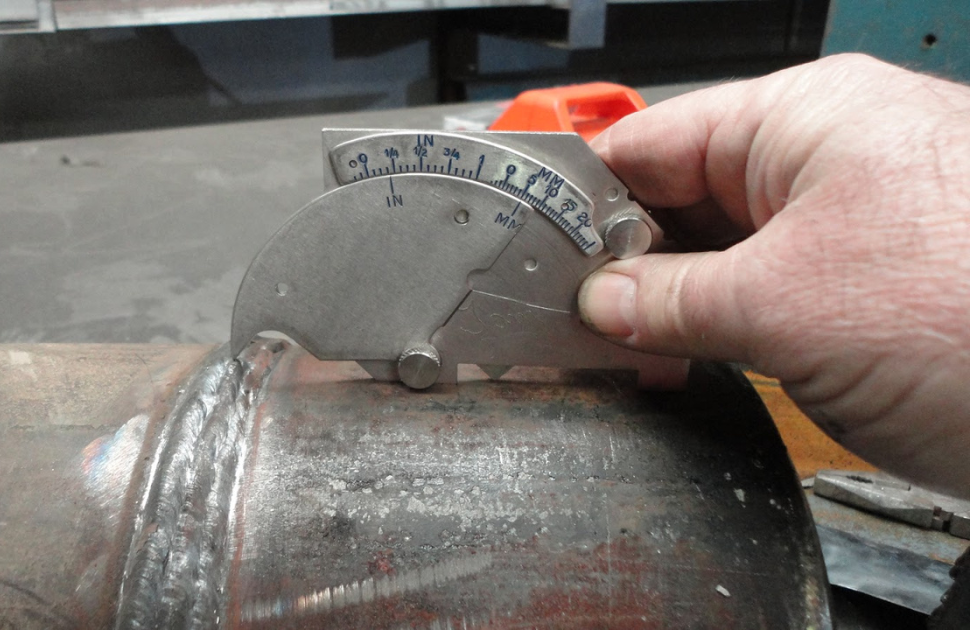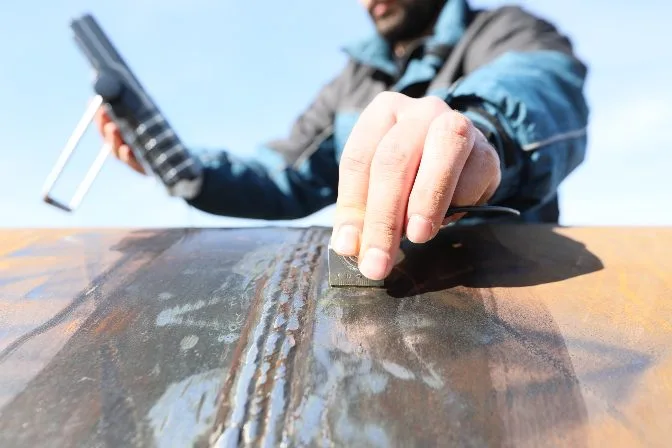A Comprehensive Overview to Recognizing Exactly How Welding Examination Works: Strategies, Standards, and Ideal Practices for Quality Control in Steel Fabrication
Understanding the intricacies of welding inspection is crucial for keeping the honesty of metal fabrication. Implementing ideal methods can considerably enhance high quality assurance measures. The landscape of welding examination is not without its difficulties.
Significance of Welding Inspection
Although welding is a critical procedure in different sectors, its stability directly influences the security and performance of structures and parts. Reliable welding examination is essential for determining defects that could endanger the top quality and sturdiness of bonded joints. This process ensures adherence to established specifications and requirements, which are essential for preserving architectural integrity and operational integrity.
Welding evaluation offers multiple functions, consisting of verifying that the welding process has actually been executed properly, analyzing the quality of materials utilized, and validating that the finished product satisfies governing and industry standards (Houston Welding Inspection). With strenuous inspection, potential problems such as porosity, fractures, and insufficient blend can be spotted early, mitigating and preventing costly repair work security dangers
Additionally, constant welding assessments foster self-confidence amongst stakeholders, consisting of designers, customers, and regulative bodies, by showing a commitment to quality control. The significance of welding evaluation can not be overstated; it is essential not only for compliance with lawful needs yet additionally for improving the general performance of welded frameworks. Inevitably, a durable welding evaluation program is a proactive step that safeguards against failings, making sure the durability and reliability of bonded parts in their designated applications.
Usual Welding Assessment Techniques

Visual inspection is the first line of defense, enabling examiners to determine surface area problems such as cracks, damages, or insufficient combination. Radiographic screening makes use of X-rays or gamma rays to disclose inner flaws, making it suitable for complicated welds. Ultrasonic testing utilizes high-frequency acoustic waves to find subsurface flaws, providing exact dimensions of weld stability.
Magnetic particle screening is efficient for ferromagnetic materials, highlighting surface and near-surface interruptions when particles are used to an electromagnetic field. Alternatively, color penetrant testing uses a liquid color to disclose surface-breaking flaws, making sure that even the smallest imperfections are identified.
Each strategy has its staminas and limitations, commonly requiring a combination of approaches for detailed assessment - Houston Welding Inspection. By using these assessment techniques, quality control in metal manufacture is accomplished, ensuring that bonded structures fulfill security and performance requirements
Industry Requirements for Welding


The American Welding Culture (AWS) and the American National Specification Institute (ANSI) are 2 famous companies that develop welding requirements. AWS D1.1, as an example, details the demands for welding steel structures, while AWS D1.2 focuses on aluminum. Internationally, the ISO 3834 standard addresses quality needs for blend welding, giving a structure suitable across national boundaries.

Finest Practices for Quality Control
Quality assurance in welding is critical to achieving risk-free and resilient constructions. Developing a detailed high quality management system (QMS) customized to the certain welding project is essential.
Normal training and accreditation of welding personnel are essential for preserving an experienced labor force. Constant education on the most recent welding methods and technologies makes sure that inspectors and welders are educated regarding existing requirements and techniques.
Furthermore, performing pre-weld evaluations to evaluate materials and tools can avoid issues before they happen. Houston Welding Inspection. Throughout the welding process, real-time surveillance and documentation of welding specifications aid identify incongruities instantly. Post-weld assessments should include detailed evaluations utilizing non-destructive screening (NDT) methods to guarantee the honesty of the welds
Furthermore, maintaining clear communication amongst staff member promotes a culture of high quality. Routine audits and testimonials of the welding procedure help identify areas for enhancement. By adhering to these link finest techniques, companies can attain optimal quality control, ultimately causing improved security and efficiency in steel manufacture tasks.
Obstacles in Welding Examination
Although welding inspection is critical for ensuring structural integrity, it offers a selection of obstacles that can make complex the evaluation process. One considerable challenge is the variability in welding strategies and products utilized, which can impact the consistency of weld quality. Various welders might utilize varying approaches, bring about disparities that inspectors requirement to identify and evaluate.
Another obstacle includes the detection of issues. Non-destructive screening (NDT) methods, such as ultrasonic and radiographic screening, can be complicated and require knowledgeable service technicians to translate outcomes precisely. False positives or downsides can occur, possibly leading to pricey rework or jeopardized safety.
Furthermore, try here the presence of ecological elements, such as temperature level and humidity, can affect the integrity of welds and the performance of evaluation strategies. Inspectors need to also browse the regulatory landscape, making sure conformity with market criteria, which can vary by jurisdiction and application.
Verdict
In final thought, welding examination plays an important function in ensuring the stability and safety and security of steel construction. Utilizing a selection of evaluation methods, sticking to established market criteria, and carrying out reliable quality administration methods jointly boost the reliability of welded structures. In spite of the obstacles encountered in the inspection process, a commitment to constant enhancement and adherence to finest methods can dramatically bolster the quality assurance framework, cultivating greater confidence among stakeholders in the welding market.
Effective welding evaluation is necessary for determining flaws that might jeopardize the high quality and toughness of bonded joints.Additionally, constant welding assessments foster confidence among stakeholders, including designers, customers, and regulative bodies, by demonstrating a commitment to top important source quality guarantee.The American Welding Culture (AWS) and the American National Criteria Institute (ANSI) are two prominent companies that develop welding requirements. During the welding procedure, real-time tracking and documentation of welding parameters aid determine disparities instantly. Despite the obstacles dealt with in the evaluation procedure, a dedication to continuous renovation and adherence to finest practices can dramatically boost the quality guarantee framework, cultivating higher confidence amongst stakeholders in the welding industry.